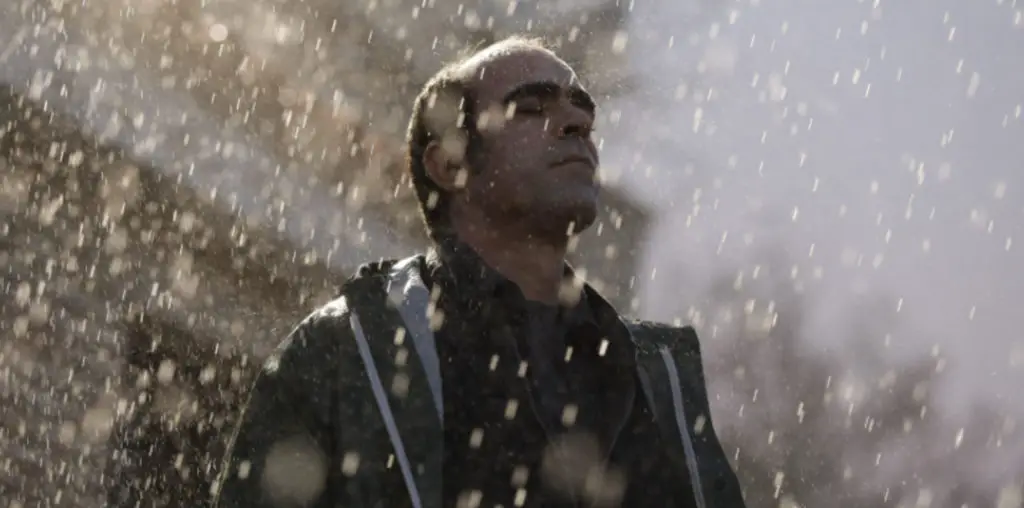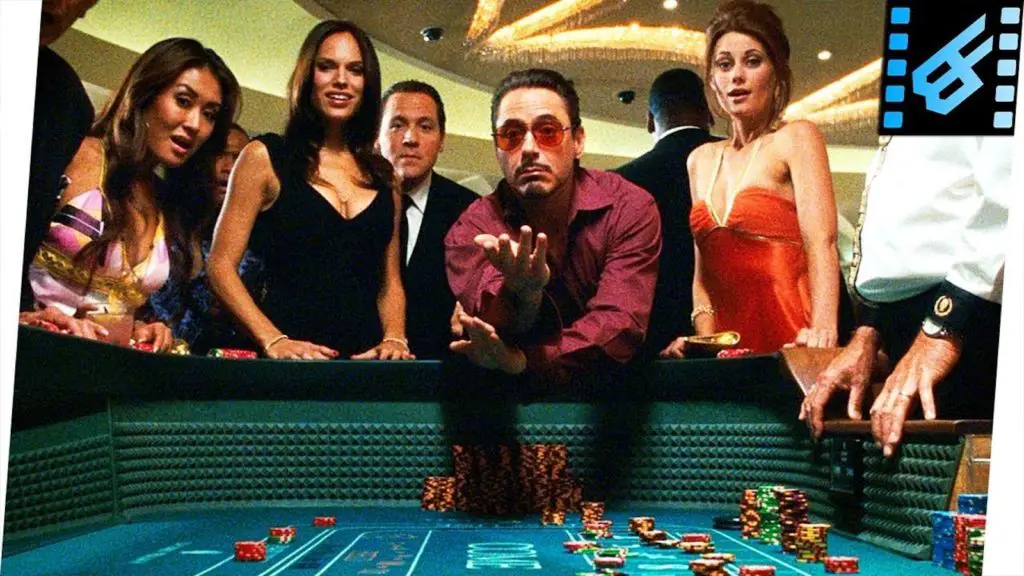
Josiah (Richard Carroll Jr.) is a filmmaker making the big move West from New York City to Los Angeles to make a name for himself in Hollywood. Alongside him are his friends on the same journey, all aware of the pitfalls of Hollywood but convinced they can sidestep them. As Josiah battles the ever-familiar war of art vs. commerce, he also pursues a relationship with Ayoka (Azur-De), a Hollywood girl who doesn’t always approve of his lifestyle (particularly his fondness for weed).
Sai Varadan’s An American in Hollywood is an ambitious film, in that it is full of ideas that it doesn’t always pull off. For example, it casts the filmmaker and his friends from New York City as a filmmaking Justice League, battling the super-villains and associated evil forces of Hollywood. Characters are introduced as if they are superheroes, and imagery is often presented in comic book-style illustrations.
It’s a cool idea, but where it falls apart is that the film spends a pretty good chunk of the film setting up these characters and then not doing much more with them. It’s like you get a primer on the faces you’ll be seeing throughout the film, but so few are given additional depth, that it takes time away that could be better served setting up a more thorough narrative. As is, the film presents scenes, and kind of connects them with themes that run throughout (art vs. commerce, NYC vs. LA), but there’s no real center narrative to get behind, besides the relationship between Josiah and Ayoka (which isn’t really presented with any dramatic stakes).
In addition to the loosely connected scenes, the film presents stand-up routines, a la Seinfeld, to comment on the different conversations and actions taking place in the film. It’s a fine idea, but when mixed in with the comic book idea, the voiceover narration that comes and goes and the general looseness of the narrative, it’s just a jumble of a film. Again, you can’t call the film lacking for ambition or ideas, but I don’t know that you can call it successful either; it’s a “jack of all trades, master of none” scenario.
I guess it would be something if the themes were stronger, but the “artist vs. sell-out” conversation isn’t always the most compelling, even if it remains prevalent and relevant. The film doesn’t say anything new, so as an audience you seek something else to connect with, and there’s not much there. The performances are good, but you don’t quite connect with the characters because they lack depth. I’ll always take two or three fully fleshed-out, layered characters over ten faces whose names I won’t remember when the credits roll.
In the end, I respect filmmakers that take risks, and I think this film takes a bunch of them. Had the film committed to a single concept and let the narrative play out in a way that allowed the audience to get to know the characters in a more natural way, perhaps it would’ve been easier to engage with. I personally connected with many of themes (Film Threat ain’t Variety, you know, and I left LA for NJ a while ago), but they weren’t enough to keep me interested overall.
This film was submitted for review through our Submission for Review system. If you have a film you’d like us to see, and we aren’t already looking into it on our own, you too can utilize this service.

